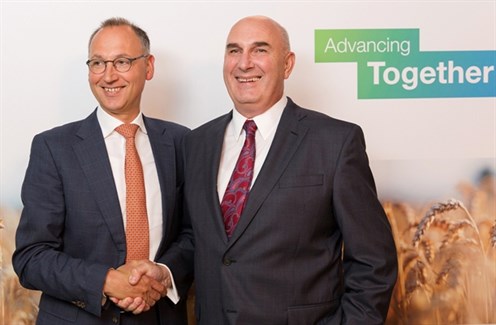On their third attempt this year, the board of Bayer once again upped its offer and finally persuaded the shareholders at Monsanto to sell. This deal hits the headlines as it will be the largest global acquisition undertaken this year. It will create a vast conglomerate spanning pharmaceuticals, health products plus agricultural seeds and products.
In a press statement released on 14 September 2016, Bayer and Monsanto announced that they had signed a definitive merger agreement under which Bayer will acquire Monsanto for USD 128 per share in an all-cash transaction. Monsanto’s Board of Directors, Bayer’s Board of Management and Bayer’s Supervisory Board have unanimously approved the agreement.
 |
Werner Baumann, CEO of Bayer AG said: “We are pleased to announce the combination of our two great organisations. This represents a major step forward for our Crop Science business and reinforces Bayer’s leadership position as a global innovation driven Life Science company with leadership positions in its core segments, delivering substantial value to shareholders, our customers, employees and society at large.”

Werner Baumann (left), CEO of Bayer AG, and Hugh Grant, Chairman and CEO of Monsanto
The release naturally concentrates on the company’s two core sectors, explaining that this transaction brings together two different, but highly complementary businesses. The combined business will benefit from Monsanto’s leadership in seeds & traits and climate corporation platform along with Bayer’s broad crop protection product line across a comprehensive range of indications and crops in all key geographies. As a result, growers will benefit from a broad set of solutions to meet their current and future needs, including enhanced solutions in seeds and traits, digital agriculture and crop protection.
Bayer intends to finance the transaction with a combination of debt and equity. The combined agriculture business will have its global seeds & traits and North American commercial headquarters in St Louis, Missouri, USA with its global crop protection and overall crop science headquarters in Monheim, Germany.
The biggest hurdle still to jump is to get the merger past the numerous financial regulatory agencies around the world. The closing date for the deal is forecast to be the end of 2017.
Relevance to professional pest control?
On the face of this, readers may query the relevance to professional pest control. Monsanto has little, or nothing, in this sector. However, the Bayer Environmental Science business and their professional pest control products are dear to the hearts of the readers of Pest.
Strengthening the position of the company globally is obviously good news, but pest control makes up only a small proportion of the corporate whole. Two of the ways this acquisition may affect the professional pest control business are firstly that, due to its relatively small size, it is left to get on with its ‘business as usual’. Or, secondly, it may become a tasty morsel to sell, viewed as ‘not main stream business’, so raising Bayer some funds, as recently happened to the global Bayer consumer garden business. Only time will tell.
It certainly seems to be merger mania at the moment for these giant multi-national companies as Syngenta was sold to ChemChina earlier this year and Dow and DuPont announced a pairing of equals.



